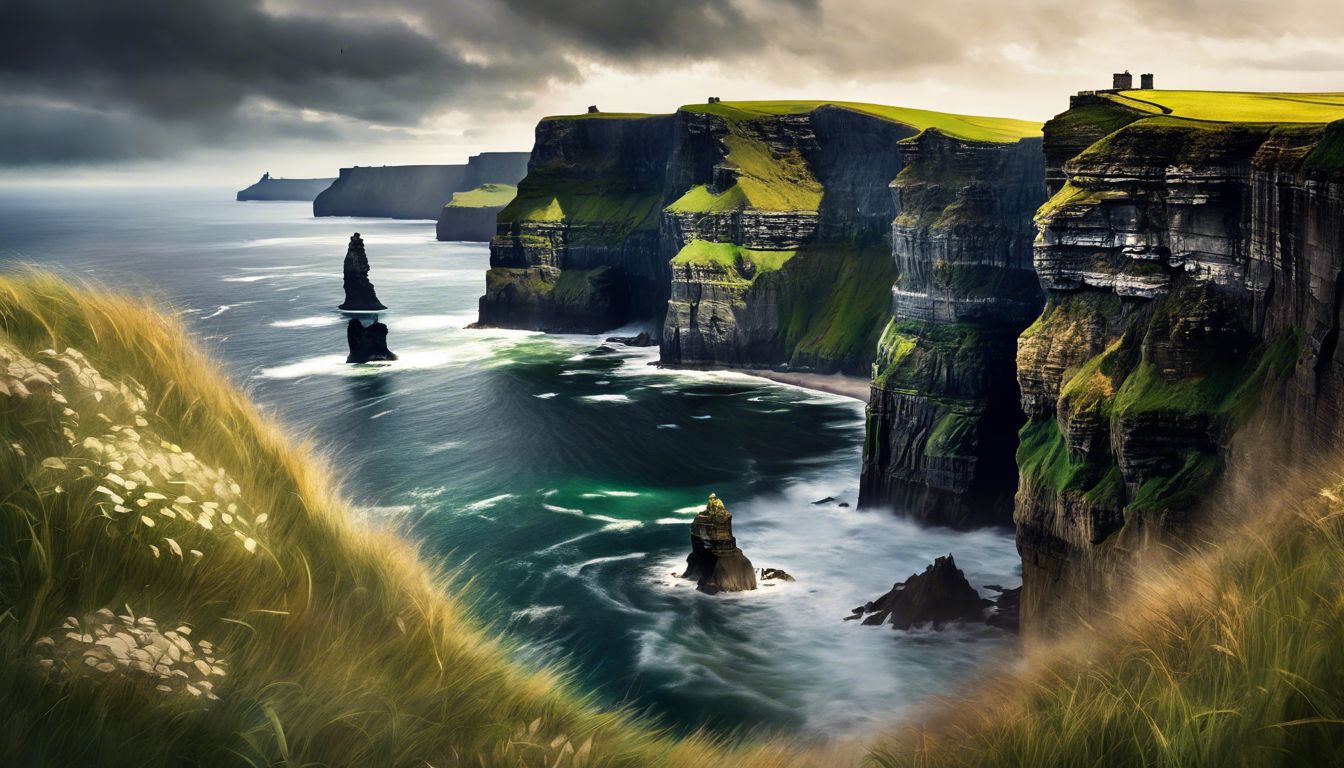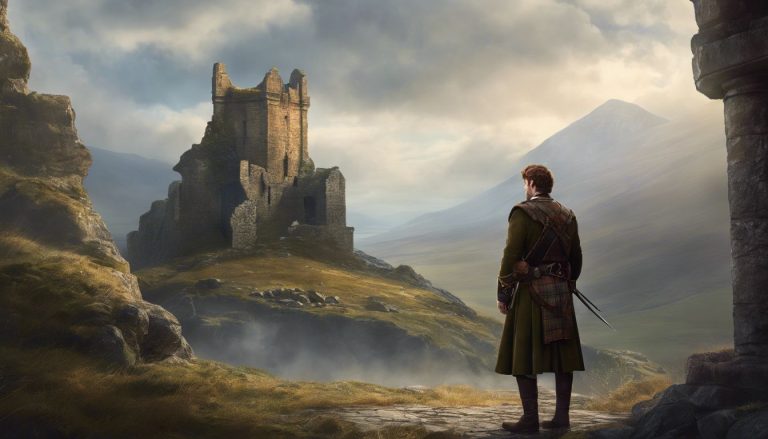Is the Republic of Ireland Part of the British Isles? An Explanation
Have you ever wondered if the Republic of Ireland is part of the British Isles? The British Isles are a group of islands that include Great Britain, all of Ireland, and many smaller islands.
The Republic of Ireland is one important piece of this puzzle. It’s a country with its own rules and not part of the United Kingdom, which includes England, Scotland, Wales, and Northern Ireland.
Even though it’s right next to Great Britain and shares land with Northern Ireland on the island of Ireland itself.
Dublin is where most people in the Republic live; it’s their capital city. In total, about 5.15 million folks call this green land home. They’re known for enjoying their independence since becoming their own country many years ago after being under British rule for centuries.
Plus, they’re different from Northern Ireland because they’re part of Europe in a big way—they help make decisions as members of the European Union.
Understanding how these lands fit together tells us much about history and politics around those parts. So let’s take a closer look at what makes the Republic an independent nation within these fascinating islands! Get ready to explore more inside our article!
Key Takeaways
- The Republic of Ireland is geographically part of the British Isles but not politically connected to the United Kingdom.
- Ireland has its own government and laws and became fully independent in 1949.
- The Irish Free State was created in 1922 after gaining partial independence from Britain through the Anglo-Irish Treaty.
- Despite being on the same island, Northern Ireland is part of the UK while the Republic of Ireland is a separate nation with a different political system.
- The climate in Ireland leads to diverse wildlife and plants, making it ecologically rich within the British Isles.
Explaining the British Isles
The British Isles comprise of Great Britain, Ireland, and smaller surrounding islands. The climate varies from region to region and supports a diverse range of flora and fauna.
Geography and climate
Ireland sits in the North Atlantic, to the west of Great Britain. It’s part of the British Isles, which includes over 6,000 islands. Ireland has a varied landscape with rolling green hills and rugged coastlines.
The famous River Shannon flows across the country, while mountains rise mainly in the west.
The climate is mild but can change fast. Rain comes often, making Ireland’s countryside lush and green. Winters are not too cold and summers stay cool. This weather helps a wide range of plants grow all year long.
Flora and fauna
The geography and climate of the Republic of Ireland greatly influence its flora and fauna. The island benefits from a mild, maritime climate, resulting in diverse plant life and an array of animal species.
Key plants include shamrock, hawthorn, and heather, while native animals such as red deer, badgers, and otters thrive in the country’s varied landscapes.
Rich in natural beauty, Ireland is home to over 400 bird species including puffins and golden eagles. Additionally, its coastal waters host a variety of marine life like seals and dolphins.
Demographics and urban areas
The Republic of Ireland is home to approximately 5.15 million people, with its largest city and capital being Dublin, where around 2.1 million residents live. The urban areas in the Republic of Ireland are vibrant and diverse, contributing to the rich cultural tapestry of the nation.
In these areas, you can explore historical sites such as Trinity College or marvel at architectural wonders like Cahir Castle.
Moving on to “The Relationship Between Ireland and the British Isles” let’s delve into the intricate history and political landscape that has shaped this dynamic association between these entities.
The Relationship Between Ireland and the British Isles
The relationship between Ireland and the British Isles is complex, with a long history of political tension and differing cultural identities. While geographically located within the British Isles, Ireland has its own distinct national identity and sovereignty separate from the United Kingdom.
History of the UK and Ireland
The Republic of Ireland and the United Kingdom have a complex history due to British sovereignty over Ireland for many years. The Irish history is marked by British rule, including colonization, economic exploitation, religious conflicts, and political tensions.
The relationship between the UK and Ireland has been shaped by events such as the Anglo-Irish Treaty in 1921 which led to Irish independence and the creation of the Irish Free State.
IrishBritish relations have evolved through various phases, marked by conflicts such as the Troubles in Northern Ireland but also cooperation through institutions like the Good Friday Agreement.
Political landscape and differences
The Republic of Ireland and the United Kingdom have different political landscapes. The Republic of Ireland is a sovereign country, part of the British Isles but not part of the United Kingdom.
On the other hand, Northern Ireland is one of the four constituent parts of the United Kingdom. Despite sharing geographical proximity, both entities have distinct political systems and governing bodies.
Notably, while Northern Ireland is governed by the UK Parliament in Westminster, Dublin serves as the seat for government in the Republic.
The political differences between these neighboring entities reflect historical complexities and differing paths to governance. These disparities are pivotal in understanding their interactions within the larger context of Irish-British relations – a rich tapestry woven through shared history, yet colored with unique experiences leading to separate sovereignties.
Defining the Republic of Ireland
The Republic of Ireland gained independence from the United Kingdom and is now an independent nation. It has its own government, laws, and political landscape separate from Northern Ireland and the rest of the UK.
Irish independence and the Irish Free State
The Republic of Ireland gained independence from the United Kingdom in 1922, leading to the establishment of the Irish Free State. This marked a significant historic moment as it granted Ireland partial independence while maintaining some ties with Britain.
The Anglo-Irish Treaty facilitated this transition, resulting in Ireland becoming a self-governing dominion within the British Commonwealth. However, it wasn’t until 1949 that Ireland officially declared itself a republic and ceased its association with the Commonwealth, ultimately establishing itself as an independent nation.
This move solidified Ireland’s position as a separate entity from the United Kingdom while affirming its status as an integral part of the British Isles. Additionally, this journey toward complete sovereignty paved the way for Ireland to become part of the European Union, further shaping its identity and relationships on both local and international stages.
Relationship with Northern Ireland
The Republic of Ireland shares the island of Ireland with Northern Ireland, which is part of the United Kingdom. This has led to a complex relationship between the two regions, marked by historical and political differences.
Despite being separate entities, they both coexist within the British Isles, each with its distinct cultural and political identity. The Good Friday Agreement in 1998 brought peace and established cooperation mechanisms between the Republic of Ireland and Northern Ireland, though challenges remain in reconciling their differing aspirations.
Conclusion: The Republic of Ireland as an Independent Nation within the British Isles
In summary, the Republic of Ireland is an independent nation within the British Isles. With its own unique history and political landscape, it stands distinct from the United Kingdom.
The Irish Republic’s membership in the European Union further underscores its separate identity. As part of the Celtic nations, Ireland’s rich culture and heritage contribute to its individuality within the broader context of the British Isles.
FAQs
1. Is the Republic of Ireland in the British Isles?
No, while the physical geography places it within the group of islands known as the British Isles, politically and culturally, The Republic of Ireland is a separate sovereign nation and not part of the United Kingdom.
2. What relationship does The Republic of Ireland have with Britain?
The Irish Republic has its own government and relations with Britain are managed on an international basis between two sovereign countries.
3. Are people from The Republic of Ireland considered part of the Celtic nations?
Yes, people from The Republic of Ireland are part of what’s known as Celtic nations due to their shared cultural roots and historical languages.
4. Why might someone think The Republic of Ireland is part of the British Isles?
Some confusion arises because geographically-speaking, Ireland lies close to Great Britain but this does not reflect political boundaries or sovereignty.







